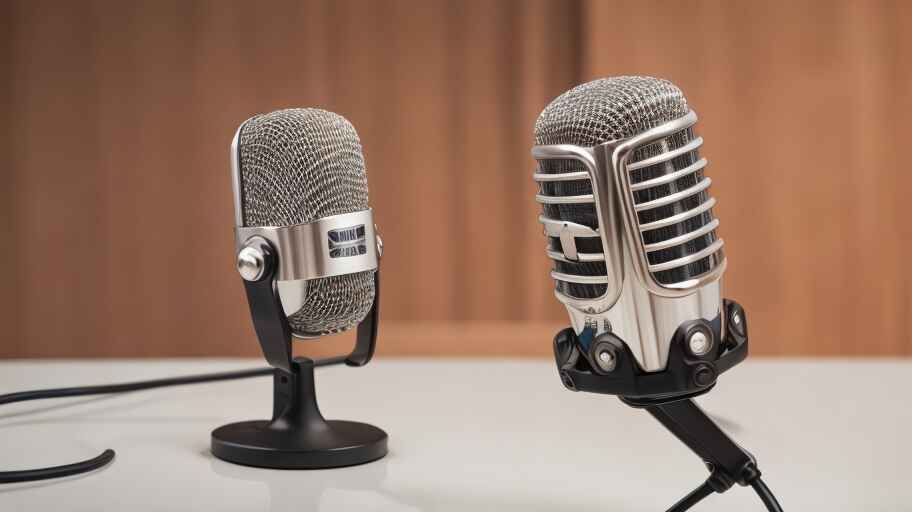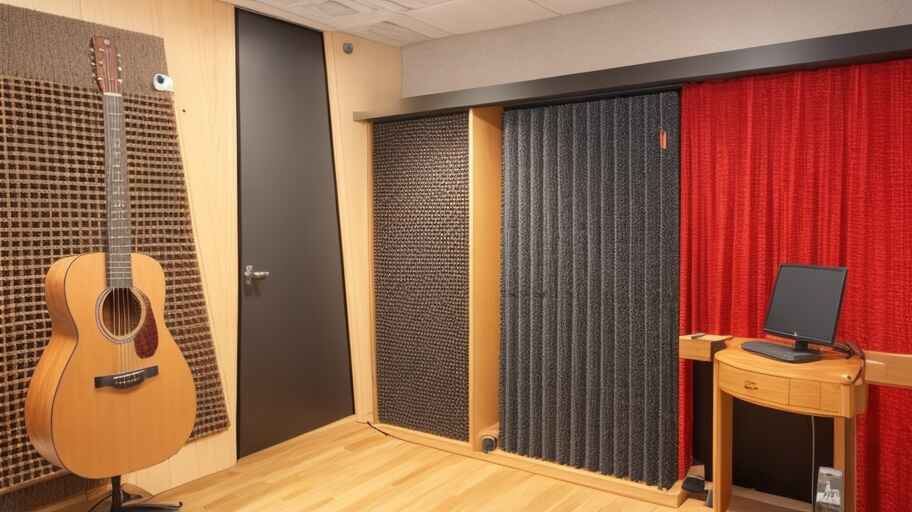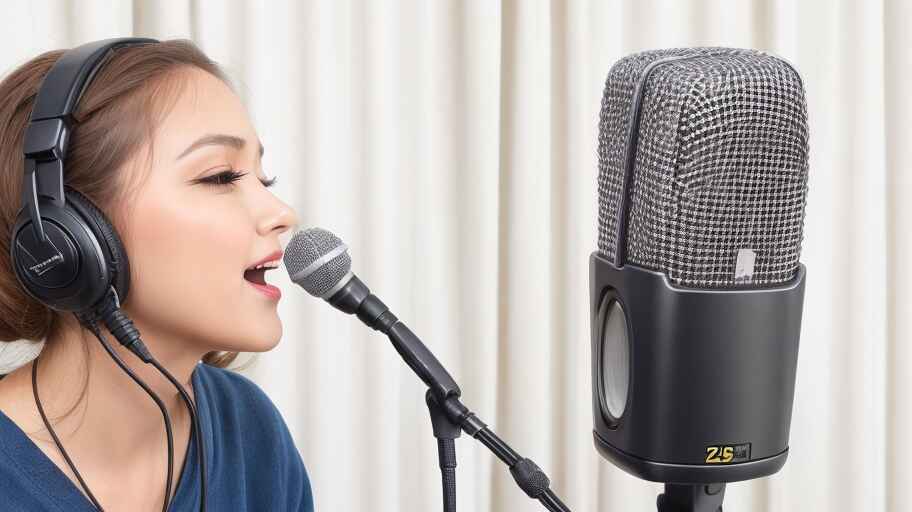In the world of audio recording, achieving pristine sound quality is paramount. However, one common issue that plagues many content creators and streamers is the annoying interference of mouse clicks in their recordings.
The good news is that you don’t need a degree in audio engineering to resolve this problem.
In this comprehensive guide, we will explore various strategies and techniques to ensure your microphone doesn’t pick up those irksome mouse clicks.
Why Microphones Pick Up Mouse Clicks: The Basics

Before we delve into the solutions, it’s essential to understand why microphones tend to capture mouse clicks.
When you click your mouse, it generates sound waves, albeit subtle ones.
Microphones are highly sensitive devices designed to pick up even the faintest of sounds. Hence, they inadvertently capture these clicks, causing disruptions in your recordings.
Types of Microphones: Sensitivity Matters
Not all microphones are created equal, and their sensitivity to different sounds can vary significantly.
To mitigate mouse click interference, it’s crucial to choose the right type of microphone. Let’s explore the primary microphone types and their suitability for your needs.
Dynamic Microphones
Dynamic microphones are known for their robustness and ability to handle high sound pressure levels.
They are less sensitive to ambient noise, making them an excellent choice for environments with frequent mouse clicks.
Condenser Microphones
Condenser microphones are highly sensitive and capture a broader range of frequencies.
While they excel in capturing rich audio, they are more prone to picking up background sounds, including mouse clicks.
Therefore, careful consideration is needed when using condenser mics in noisy environments.
Understanding Microphone Polar Patterns

Microphones have different polar patterns, which dictate the directions from which they capture sound.
Understanding these patterns can help you position your microphone to minimize the pickup of unwanted noise, such as mouse clicks.
Cardioid
A cardioid polar pattern captures sound primarily from the front while rejecting noise from the sides and rear.
This pattern is ideal for isolating your voice and reducing the chances of capturing mouse clicks.
Omnidirectional
Omnidirectional microphones pick up sound evenly from all directions.
While they may capture more ambient noise, proper placement can still help mitigate mouse clicks.
Condenser vs. Dynamic Microphones: Pros and Cons
Let’s dive deeper into the differences between condenser and dynamic microphones, discussing their respective advantages and disadvantages.
Condenser Microphones
Pros:
- Exceptional audio quality
- Ideal for studio settings with controlled noise
- Captures nuanced sounds
Cons:
- Sensitive to background noise
- Prone to capturing mouse clicks without proper setup
Dynamic Microphones
Pros:
- Excellent noise rejection
- Robust and durable
- Suitable for live performances and noisy environments
Cons:
- May lack the audio fidelity of condenser mics
- Require a close mic technique for optimal results
Creating the Right Acoustic Environment

To prevent your microphone from capturing mouse clicks, you must set the right mood in your recording space.
Here are some tips for creating an ideal acoustic environment.
Soundproofing Basics
Soundproofing involves reducing the transmission of external sounds into your recording space.
While it may seem like a daunting task, some simple steps can make a significant difference.
Seal Gaps and Cracks
Inspect your recording area for any gaps or cracks in windows, doors, or walls.
Sealing these openings can help reduce the entry of external noise, including mouse clicks.
Thick Curtains and Carpeting
Hang thick curtains and add carpeting to your recording space.
These materials can absorb sound waves and minimize their reflection, making your environment quieter.
DIY Soundproofing: Building a Desktop Booth
For those who are serious about sound quality, constructing a desktop soundproof booth can be a game-changer.
This DIY project can effectively isolate your microphone from unwanted noise.
Positional Adjustments: Microphone vs. Mouse

The positioning of your microphone and mouse plays a pivotal role in preventing mouse clicks from creeping into your recordings.
Let’s explore the optimal distance and placement for both.
Optimal Distance and Placement
Position your microphone at a distance that allows you to maintain proper ergonomics while using your mouse.
The exact distance may vary depending on your setup, but aim to keep it as far away from the mouse as possible without compromising your comfort.
Angle and Direction: Maximizing Sound Quality
Experiment with the angle and direction of your microphone to find the sweet spot.
Slight adjustments can make a significant difference in sound quality and noise rejection.
Mouse Pads: Soften Your Clicking Ground
When it comes to reducing the audibility of mouse clicks, starting with the foundation is crucial.
Your choice of mouse pad can significantly impact the noise level.
Brands and Models to Consider
Investing in a high-quality, soft mouse pad can make a world of difference.
Brands like SteelSeries, Razer, and Corsair offer options designed for minimal noise production.
These pads are often made of materials that dampen the sound of clicks, providing a quieter surface for your mouse to glide on.
Why Silent Mice Might Be Your Best Investment
Another effective solution is switching to a silent mouse. These mice are designed with noise reduction in mind, featuring specially engineered switches that produce minimal sound.
Logitech and Microsoft are among the manufacturers producing silent mice that can greatly enhance your audio quality.
Adjusting Mic Sensitivity: Find the Sweet Spot

The sensitivity of your microphone can play a pivotal role in picking up unwanted background noises.
Let’s explore how you can optimize mic sensitivity to minimize the impact of mouse clicks.
Manual Adjustments on the Mic
Most microphones offer manual sensitivity adjustments.
Experiment with lowering the sensitivity until you strike the right balance between picking up your voice and filtering out peripheral noises like mouse clicks.
Using Software for Fine-tuning
Alternatively, you can fine-tune your mic sensitivity through software settings.
Popular recording and streaming software like OBS Studio and Adobe Audition allow you to customize sensitivity levels to match your specific needs.
Digital Noise Cancellation: Tech to the Rescue
Advancements in technology have given rise to digital noise cancellation solutions that can be a game-changer for audio quality.
Use Pop Filters: Not Just for Vocal Pops!
Pop filters are a tried-and-true tool for improving audio quality, especially in vocal recordings.
Surprisingly, they can also be a valuable asset in reducing mouse click noise.
Benefits in a Non-Vocal Setup
Although pop filters are primarily associated with vocals, they can effectively intercept mouse clicks as well.
Placing a pop filter between your mouse and microphone can help attenuate the clicking sounds before they reach your mic.
For an in-depth understanding of eliminating background noise blue yeti, take a moment to read my article How to Eliminate Background Noise Blue Yeti? Solving Audio
Choosing the Right Pop Filter
When selecting a pop filter for this purpose, opt for one with a dense mesh or foam layer.
This will provide better sound absorption and prevent those pesky clicks from sneaking into your recordings.
Software Filters: Removing Clicks Post-Recording
Sometimes, despite your best efforts, a few mouse clicks might still make it into your recordings.
In such cases, software filters can come to your rescue.
Top Tools and Plugins
Several software tools and plugins specialize in removing unwanted noises from recordings.
Tools like iZotope RX and Audacity offer noise reduction features that can significantly improve your audio quality.
A Guide to Effective Noise Reduction
When using these tools, it’s essential to identify and isolate the mouse click noises in your recording.
Once identified, apply the noise reduction tool selectively to minimize the impact on your voice or other desired audio.
The Art of Stealth Clicking: Technique Matters
In addition to the hardware and software solutions mentioned above, your own technique can play a crucial role in minimizing mouse click noise.
How to Train Your Hand
Practice makes perfect. Try to develop a lighter touch when clicking your mouse buttons.
Deliberately click softly and avoid slamming the buttons down. Over time, this can become a habit, reducing the noise at its source.
Benefits Beyond Sound Reduction
Aside from improving your audio quality, a lighter clicking technique is also easier on your wrists and can prevent fatigue and discomfort during long recording or gaming sessions.
Test Runs: Before Going Live or Recording
Before hitting the record button for that critical live stream or podcast episode, it’s essential to conduct test runs to ensure your setup is working flawlessly.
Importance of Trial Sessions
Perform trial recordings or live streams with the same intensity and style you intend for your final content.
This will allow you to identify any remaining issues with mouse click noise and make real-time adjustments.
Learning from Mistakes and Feedback
Don’t be discouraged if you don’t get it right the first time. Audio perfection often comes through iteration and feedback.
Keep refining your setup and techniques, and soon enough, your audience will enjoy the crisp, click-free audio they deserve.
FAQs About How to Make Your Mic Not Pick Up Mouse Clicks
How do I stop my mic from picking up mouse click?
To prevent your microphone from capturing mouse clicks, you can adjust its sensitivity settings.
Go to your computer’s audio settings, lower the microphone sensitivity, and use a directional microphone to reduce ambient noise.
If you’re interested in delving deeper into stopping the mic from picking up keyboard noise, I recommend checking out my article How to Stop Mic from Picking Up Keyboard Noise?
How do I make my mic not pick up my computer noise?
To eliminate computer noise from your microphone recordings, use noise-cancelling software or hardware, position your microphone closer to your mouth, and reduce system volume while recording or use a noise gate filter in your recording software.
Why is my mic picking up everything?
Your microphone may pick up excessive noise due to high sensitivity settings, poor quality microphone, or background noise in your environment.
Lower the sensitivity, upgrade your microphone, and minimize background noise to improve audio quality.
How do I make my mic not pick up keyboard discord?
To prevent your microphone from capturing keyboard sounds on Discord, adjust the input sensitivity settings in Discord’s voice settings.
Increase the sensitivity threshold to filter out unwanted noise while speaking.
How do I make my mic pick up only my voice?
Configure your microphone for voice isolation by using a cardioid or unidirectional microphone.
Position it close to your mouth, set a low sensitivity level, and reduce background noise through software or acoustic treatment.
Why does my mic pick up so much mouth noise?
Mouth noise can be picked up due to the microphone’s proximity to your mouth and saliva sounds.
Use a pop filter, adjust the microphone angle, and practice proper microphone technique to minimize these noises.
Can I silence my mouse click?
You can reduce mouse click noise by using a quieter mouse, using a mouse pad with noise-dampening properties, or using software that suppresses mouse click sounds.
These measures can help make your mouse clicks less intrusive.
How do I reduce mouse click sensitivity?
To lower mouse click sensitivity, access your computer’s mouse settings and adjust the pointer speed.
Additionally, use a mouse with customizable DPI settings to fine-tune sensitivity according to your preferences.
How do I turn down my microphone sensitivity?
To decrease microphone sensitivity, access your computer’s audio settings or microphone properties.
Adjust the input volume or sensitivity slider to lower the mic’s sensitivity, reducing background noise and unwanted audio capture.
Conclusion
In conclusion, mitigating mouse clicks in your microphone recordings requires a combination of practical steps and software adjustments.
Start by investing in a quality, directional microphone to reduce sensitivity to peripheral noise.
Position it correctly and use a shock mount to isolate vibrations. Employ a pop filter to minimize plosive sounds.
In your recording environment, minimize background noise through acoustic treatment and soundproofing.
Additionally, adjust microphone gain levels and use noise reduction software during post-processing.
Be mindful of your mouse-clicking technique, opting for a quieter mouse or pad.
With patience and attention to detail, you can ensure that your microphone captures pristine audio, free from intrusive mouse clicks.
